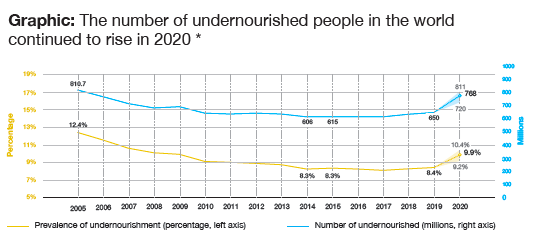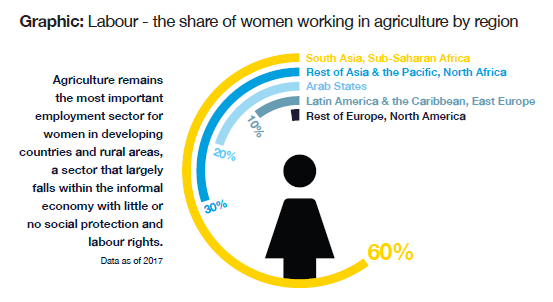Contents (go to): Positioning ¦ Why these frames? ¦ Planning ¦ Approach, action, artefacts ¦ Pictures ¦ Appendix
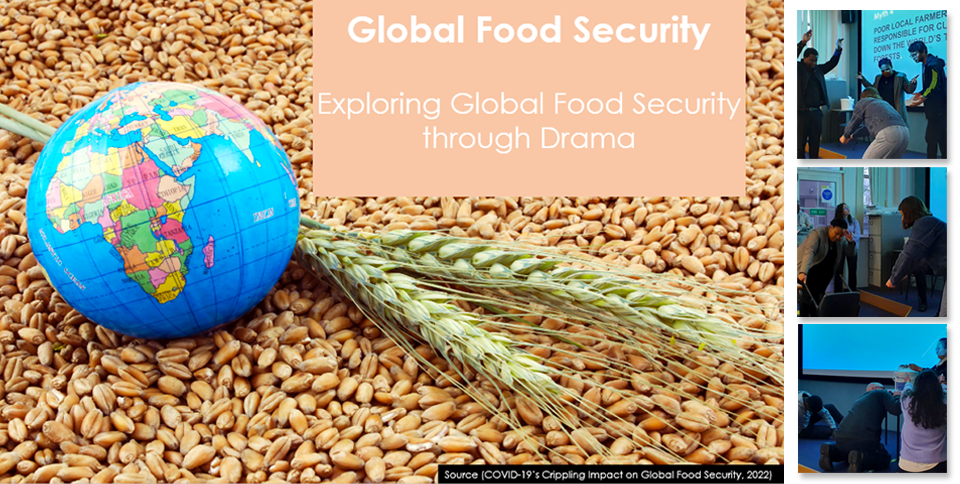
“Food security exists when all people, at all times, have physical, (social) and economic access to sufficient, safe and nutritious food which meets their dietary needs and food preferences for an active and healthy life”
(Food and Agriculture Organization [FAO])
According to article 25 of the Universal Declaration of Human Rights of 1948:
“Everyone has the right to a standard of living adequate for the health and well-being of himself and of his family, including food”
(United Nations [UN])
BUT
“30.4 million people were suffering moderate to severe food insecurity in the world in 2020”
(FAO)
Positioning
Sustainability
Meeting “the needs of the present without compromising the ability of future generations to meet their own needs” (Brundland Commission).
The Sustainable Development Goals (SDGs)
Seventeen goals set up by the UN to be achieved by 2030 for a better and more sustainable future for all.
Ecofeminism
Theoretical framework and social movement that seeks to combine the feminist and environmental movements: It examines the connection between the oppression of women and the destruction of the environment by human activity.
Why these frames?
Sustainability
Deals with the 3 essential pillars of the food system: social, economical and environmental. In the current context of growing world’s population and climate change, the system has to adapt, to be resilient and efficient for future generations.
The Sustainable Development Goals (SDGs)
SDGs are essential to reach sustainability. Goal 2: Zero Hunger is direclty linked to our topic.
Ecofeminism
There are profound gender issues at play within our global food and agriculture systems. Despite the major role women play in the agricultural sector, according to the UN and FAO, women still remain more likely to live in extreme poverty, be less educated, and lack access to basic needs. Empowering women in agriculture through fair labour rights, wages and high quality education would allow women working in agriculture to gain access to basic income and food. This would make entire communities wealthier and safer and allow them to thrive.
Planning
Project ideas
Group project on Food Security through drama
Members of the group :
Qian Zhao, Colm Doyle, Louise O’Connor, Tebibu Solomon, Kutemwa Munyenyembe, Maeve Kirrkamm, Clara Lemétayer, Anthony Goodings and Mojabeng Mashale.
Brainstorming
Arran Towers and Fionn Woodhouse introduced us to the vast topic of Food Security and to various drama techniques. As a group, we discussed and narrowed our topic to availability of food, access to food and utilisation of food. The article “10 myths about hunger” (World Food Day: 10 myths about hunger) helped us for the presentation and its content.
Action plan
The project aimed to raise awareness of Food Security to our audience and promote further learning by presenting Food Security in a Drama production. Representation of four myths with our bodies:
- There is not enough food to currently feed everyone on Earth.
- Plant-based alternatives are always good for the environment.
- The majority of food producers are men.
- Poor local farmers are responsible for cutting down the world’s tropical forests.
And requiring the audience to participate and think by asking them “What do you see?” and discuss about it. It makes the presentation more interesting and stimulating.
Reality
Globally, women have more responsibility for food production but their conditions are unequal: unpaid, seasonal/part-time job, paid less than men.
| Myth | Reality |
|---|---|
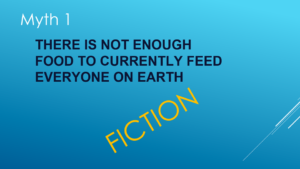 |
There is enough food being produced today to feed everyone on the planet, yet by 2020 over 820 million people were considered “chronically undernourished”.
Global hunger is on the rise, despite the world producing 17% more food per person today than 30 years ago as reported by Oxfam.
|
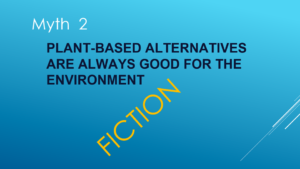 |
Despite the undeniable benefits of reducing global consumption of meat and dairy, not all plant-based alternatives are created equal.
The production of some plant-based milks, for example, which have been gaining popularity in recent years, is not very sustainable. One common milk substitute is almond milk. Almonds, the majority of which are grown in California, are very water-intensive crops, making their environmental impact disproportionately large. A study funded by the Almond Board of California in the journal Ecological Indicators found in 2019 that the average almond grown in the US state requires 12 litres of water. That’s over 10,000 litres for a kilogram of nuts. Source: Why the vegan diet is not always green on BBC News (Feb 13, 2020), https://www.bbc.com/future/article/20200211-why-the-vegan-diet-is-not-always-green World Wildlife Foundation ‘soy’ industry overview, https://www.worldwildlife.org/industries/soy ‘Like sending bees to war’: the deadly truth behind your almond milk obsession, The Guardian (Jan 2020), https://www.theguardian.com/environment/2020/jan/07/honeybees-deaths-almonds-hives-aoe |
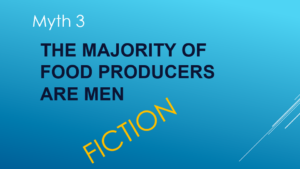 |
Globally, women have more responsibility for food production. In general, more women are in unpaid, seasonal and in part-time work, and are often paid less for the same work as men.
The amount of food produced by women cannot be completely measured or verified.
|
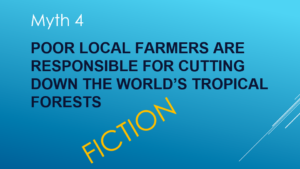 |
Deforestation is mainly caused by huge companies.
Amazon forest: Degraded by commercial agriculture and global demand for meat. Brazil meat giant JBS: Export beef all over the world. Other wolrdwide companies: IKEA, Mc Donald’s, Starbucks… Source: 12 Major Companies Responsible for Deforestation, Earth.org, Aug 17, 2021, at https://earth.org/major-companies-responsible-for-deforestation/. Revealed: new evidence links Brazil meat giant JBS to Amazon deforestation, The Guardian (27 July 2020), at https://www.theguardian.com/environment/2020/jul/27/revealed-new-evidence-links-brazil-meat-giant-jbs-to-amazon-deforestation |
Project management
| Goal | Steps needed to achieve goals | Tasks | Resources | Responsible | Deadline |
|---|---|---|---|---|---|
| Raise awareness of food security | 1. Learn about food security | Research subject | Internet, library | All | 16 March |
| 2. Decide area of focus group | Group discussion on materials presented | Sourced material from previous step | All | 22 March | |
| 3. Split the group inton two to present two Myths | Group 1 and 2: Practice and perform Myths | Reference material: 10 Myths about food hunger | All | 30 March | |
| 4. Decide and practice drama production | Walk through and practice drama production | Fionn and Arran, group participation | All | 30 March | |
| Presentation | 5. Present drama production | Create PowerPoint | PowerPoint, material discussed | Colm | 6 April |
| 6. Lights Camera Action | Set stage. Narrators | Tables, chairs, group PowerPoint presentation | All | 6 April |
Approach, action, artefacts
Impact
- Removing preconceived ideas that we may have (ourselves and the public).
- Deepening our knowledge of issues surrounding our global food systems.
- Allowing us to reflect upon the decisions we make as individuals in terms of the products we buy (considering factors such as country of origin, organic, and fair trade).
Next steps
- Improving our food comsuption.
- Continue improving our knowledge on this subject.
- Share our knowledge with relatives.
| Possible challenges | Solutions |
|---|---|
| Group unable to agree on topic | Group discussion and use the resources of Fionn and Arron if needed to steer group |
| Possible unwilling participant | Find a role within the production that a participant is comfortable to carry out |
| Communication within classes | Setup the app WhatsApp group to discuss and move project on between weekly class |
| Technology issues | Discover within the group who has the various skills needed to overcome issues |
Pictures
Group presentation of Exploring global food security through drama
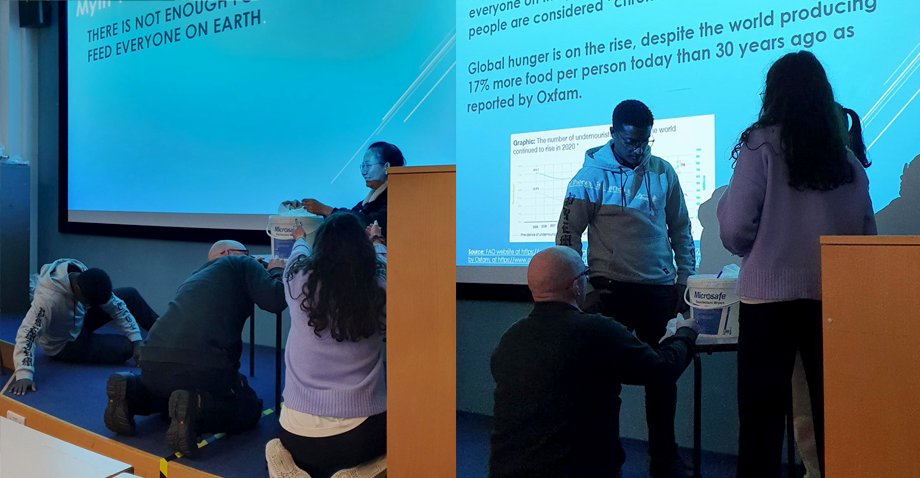
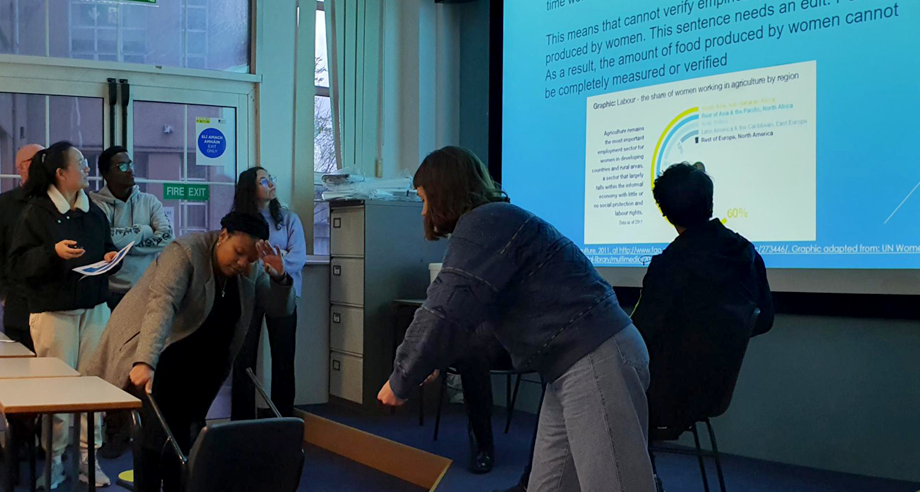
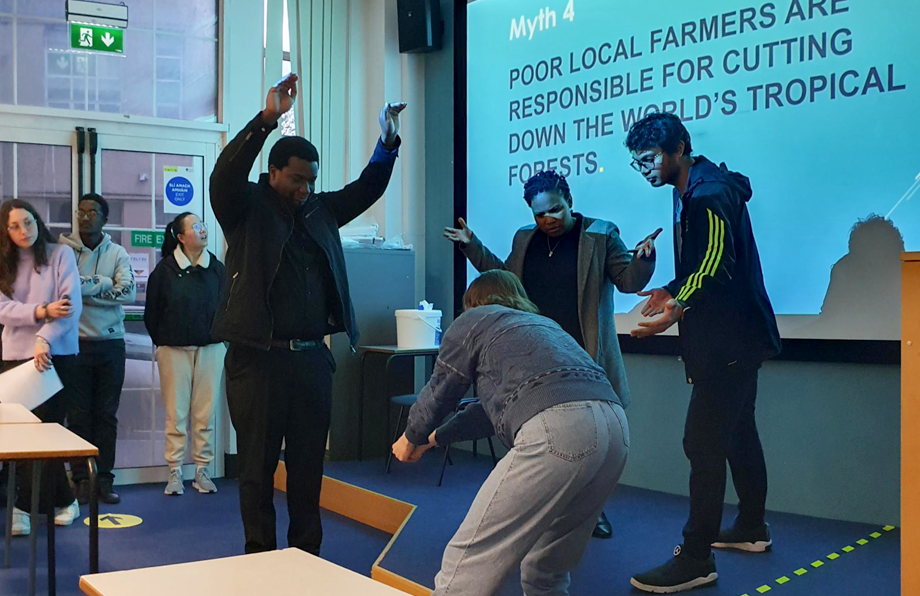
Appendix
Documents
PDFs open in a new tab or right-click and “Save link as” to download:
Group Presentation (PDF): “Global Food Security: Exploring global food security through drama“.
Group Poster (PDF): “Food Security Poster“.

